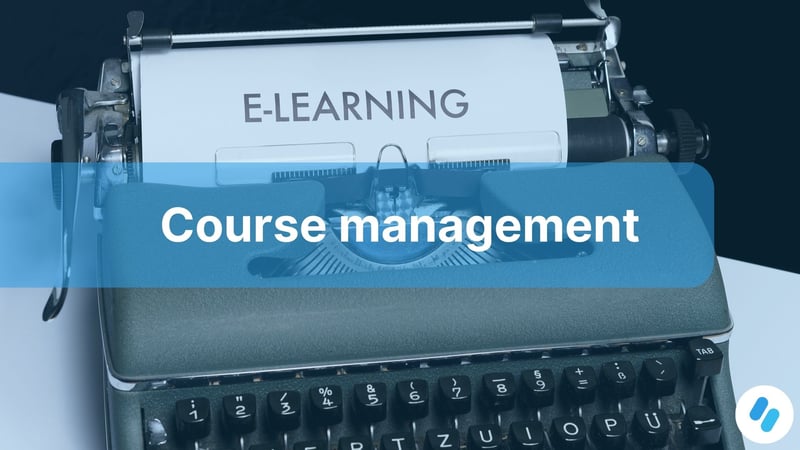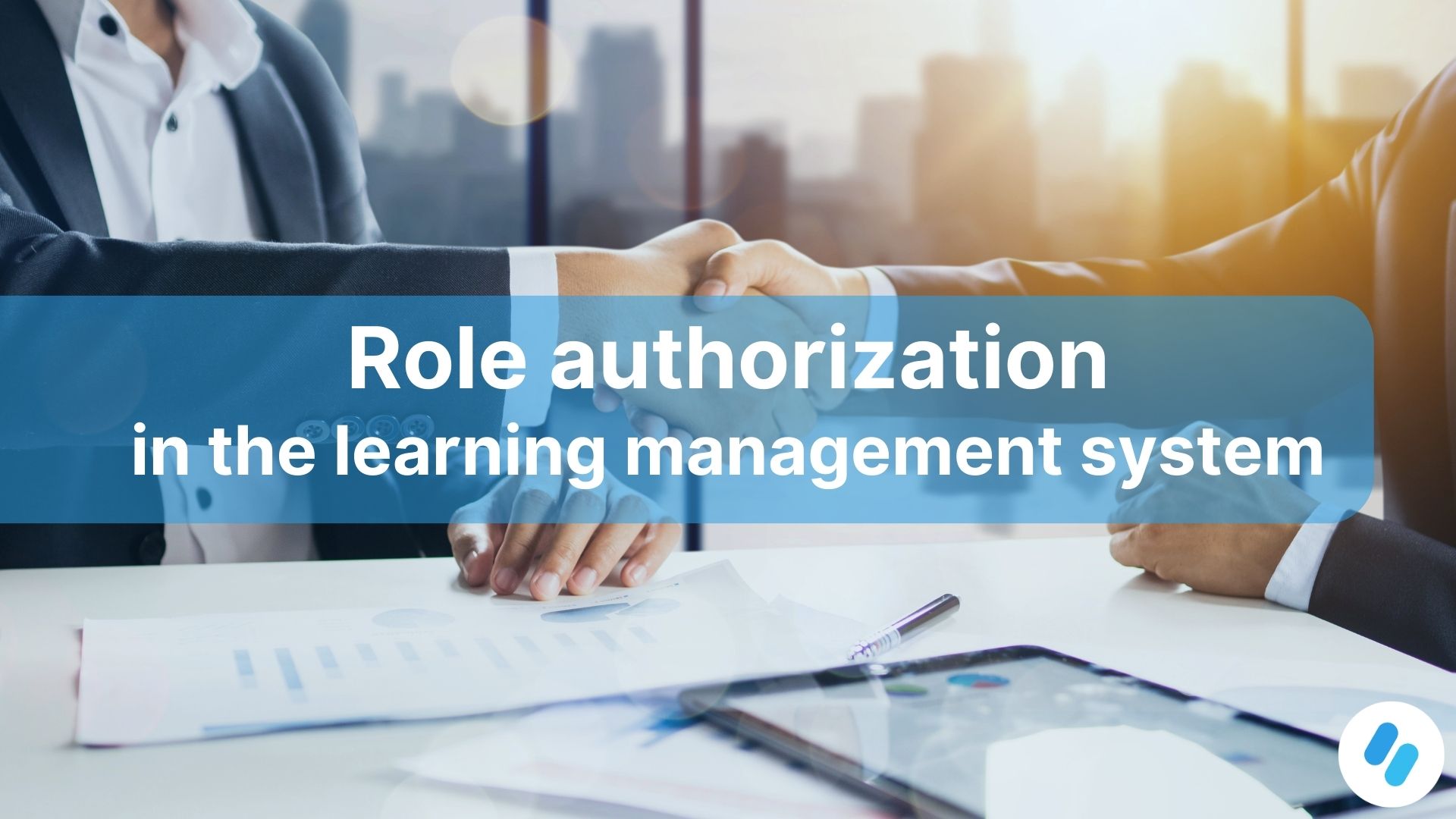Ready for the keys to power? Discover how to stay in control with the right user permissions in...
Digital course management in the company - common mistakes
Digital course management has established itself as a critical factor in the success of organizations in today's fast-paced and technology-driven world. It enables efficient organization, management and delivery of education and training resources, which is essential for the continuous development and engagement of employees.

Use the U2D Semiro learning management system to manage your courses optimally.
However, implementing a digital course management system can come with challenges such as resistance to change, technical challenges, insufficient training and support and lack of customization to the use case that need to be overcome.
Successful implementation of a digital course management system therefore requires careful planning, consideration of staff needs and continuous adaptation and improvement of the system.
Choosing the right LMS
Choosing a learning management system (LMS) is a crucial step for companies to effectively achieve their education and training goals. Learning management systems can map a company's entire training management. The great strength here is that most LMS providers offer a solution that is individually tailored to the company. Nevertheless, there are several key factors that should be considered when making a selection if you have decided to digitize training in your company.
"Big Four" criteria for selecting a suitable LMS
- User-friendliness: An intuitive and easy-to-navigate LMS is crucial for acceptance and effective use by team members. Learners should not get bored when completing courses, trainings, seminars and courses or have the feeling of having to complete "yet another" training course. A user-friendly and intuitive learning interface is also important!
- Scalability: The LMS should be scalable as the company grows and the number of users increases. Limited software capacities can become a problem if the company grows rapidly. You should therefore think about the number of users in advance and which provider can guarantee this scalability.
- Adaptability and integration: A good LMS should be customizable to support specific company requirements and individual learning paths. The system should also integrate seamlessly with existing company software, such as HR systems and communication tools.
- Customer support and training: Reliable customer support and training resources are crucial for the successful implementation and use of the LMS. On the one hand, you should think about your use case. It underlines the quality of LMS providers if you are specifically supported in the introduction of your chosen software through joint workshops.
Importance of adapting to company needs
The corporate culture plays an important role in the selection of an LMS. The system should not only reflect a company's existing learning culture, but also actively promote it. An LMS that fits well with the corporate culture is more likely to be accepted and used by employees, leading to a more effective and sustainable learning environment.
Furthermore, it is important that the LMS takes into account not only the current but also future requirements of the company. This includes the ability to adapt to new technologies or learning methods that arise as a result of constant change in the business world and technology. A future-oriented LMS ensures that the company remains competitive in the years to come.
Finally, the cost-benefit ratio of the LMS must be considered. The investment in an LMS should be in proportion to the expected benefits and return on investment (ROI). A cost-effective and high-performing system will provide the greatest benefit to your organization, both financially and in terms of improving learning and development processes.
Careful consideration of these criteria and tailoring them to the specific needs of the organization are critical to selecting an LMS that offers real value to your organization and your employees.
Involvement of employees
The successful implementation of a learning management system (LMS) depends largely on acceptance and active use by employees. Targeted strategies are required to achieve this.

Strategies to promote acceptance and use of the LMS
- Involvement at an early stage: Employees should be involved in the selection and implementation process of the LMS from the outset. This strengthens the feeling of shared responsibility and approval.
- Needs analysis: Choosing an LMS that meets the needs of employees can be easier if you know what they really need and how they can best learn. Pilot projects: Before a company-wide rollout, pilot projects with a small group of employees can provide valuable feedback and help optimize the system.
- Share success stories: Good experiences and success stories from colleagues can inspire other employees to use the LMS.
- Create incentives: Elements of gamification, rewards or recognition can stimulate the use of the LMS.
Communication and training as
key elements
- Clear communication: Regular and clear communication about the purpose, benefits and functionality of the LMS is crucial. This can be done through emails, meetings, newsletters or intranet posts.
- Provide training: Comprehensive training is necessary to ensure that all employees know how to use the LMS effectively. This can include online tutorials, webinars or face-to-face training sessions.
- Establish feedback channels: A system for regular feedback should be set up to collect and respond to employees' opinions and suggestions about the LMS.
- Offer support: Ongoing support and assistance, especially in the initial phase, are important to help employees use the LMS and overcome any obstacles.
- Continuous improvement: Based on feedback from employees, the LMS should be continuously adapted and improved to increase its effectiveness and user-friendliness.
By applying these strategies, companies can ensure that their employees not only accept the LMS, but also actively use it, leading to a successful and sustainable implementation.
Typical mistakes and how to avoid them
When implementing a learning management system (LMS), various errors can occur that impair the effectiveness and acceptance of the system. Two common sources of error are the over-complexity of the system and difficulties in digitizing analogue processes.
Over-complexity and lack of user-friendliness
Not seeing the wood for the trees or not being able to climb to the top of so many mountains. This is exactly what happens when employees are faced with a system that is far too complex and overloaded with complicated features. Here are some tips on how you can counteract over-complexity and feature overload.
-
Avoidance of over-complexity:
- Prioritize simplicity: Choose an LMS that is easy to use. Avoid systems with unnecessary features that compromise usability.
- User-centered design: Make sure that the LMS has a user-friendly interface that is intuitive and easy to navigate. Experience has shown that users find their way around best in a system that adopts the company's CI and CD.
- Offer training: Ensure that sufficient training and resources are available to familiarize employees with the system. Train team members in onboarding journeys, who in turn pass on your skills to other members of the company.
- Gather feedback: Collect regular feedback from users to identify and resolve usability issues. If the feedback is seriously negative, involve the software provider. This should also be open to the further development of the individual system after implementation.
-
Avoidance of function overload:
- Focus on core functions: Concentrate on the core functions that are most important for your company's learning objectives. These should be anchored in the aforementioned use case from the outset.
- Customizable features: Choose an LMS that is customizable and allows you to deactivate unnecessary functions. Providers whose brand essence is to implement individual software score particularly well here.
Difficulties in the digitalization of analogue processes
-
Strategic approach to digitalization:
- Gradual changeover: Digitize step by step instead of digitizing all analogue processes at once.
-
- Align analog and digital processes: Ensure that the digital processes effectively map and improve the analog processes.
-
Dealing with resistance to change:
- Communication and transparency: Clearly communicate the benefits of digitalization and how it can make day-to-day work easier.
- Training and support: Provide comprehensive training and support to facilitate the transition from analog to digital processes.
- Share success stories: Show examples of how digitizing learning management has helped other companies or departments to increase adoption.
By taking these aspects into account, companies can avoid the typical mistakes made when implementing an LMS and create a successful, efficient and user-friendly digital learning environment.
Best practices for successful LMS implementation
Effective implementation of a Learning Management System (LMS) requires strategic planning and implementation. Best practices in this area focus on the simplicity and usability of the system as well as measuring results and conducting a cost-benefit analysis.
Simplicity and Usability
When selecting a learning management system (LMS), it is crucial to prioritize an intuitive user interface. A clearly structured and easy-to-navigate LMS promotes user-friendliness and acceptance among employees. It is important to avoid overloaded menus and complex structures, as these tend to put users off and can impair the efficiency of the learning process.
Another important aspect is the user-centered design of the LMS. The system should be tailored to the needs and abilities of the end users to ensure optimal use. This includes taking into account users' different technical skills and providing customizable user interfaces to promote broad acceptance and effective use of the system.
The easy integration of the LMS into existing systems and processes is also of great importance. An LMS that integrates seamlessly facilitates implementation and promotes efficiency by fitting easily into the organization's existing IT infrastructure and the tools and platforms used. This facilitates the transition and acceptance among employees.
Finally, the accessibility and mobile-friendliness of the LMS plays a crucial role. In a world where mobile devices play a central role in everyday life, it is important that the LMS is accessible on different devices and platforms. This enables flexible learning, regardless of the user's location, and helps to expand learning opportunities for all employees.
Measurable results and cost-benefit analysis
-
Definition of KPIs:
- Define clear key performance indicators (KPIs) to measure the success of the LMS.
- Examples of KPIs include user engagement, course completion rates and performance improvement.
-
Regular tracking and reporting:
- Implement a system for regular monitoring and reporting of these KPIs.
- Use dashboards and analysis tools that are integrated in the LMS.
-
Carry out a cost-benefit analysis:
- Evaluate the costs of the LMS in relation to the benefits achieved.
- Consider both direct and indirect costs, such as time spent on training and system management.
-
Feedback and continuous improvement:
- Collect regular feedback from users to identify areas for improvement.
- Use the feedback for continuous adjustments and improvements to the LMS.
By applying these best practices, companies can ensure that their LMS is not only introduced effectively, but also offers long-term added value for the company and its employees.
Conclusion
Implementing and using a Learning Management System (LMS) in organizations is a complex process that requires strategic planning, adaptability and continuous improvement. Key learnings include the importance of usability, the need for careful selection of the LMS, employee involvement, avoiding over-complexity and the importance of measuring learning outcomes. These factors play a crucial role in the success of an LMS and help to increase efficiency and productivity in organizations.
The future of digital course management looks promising, with continuous innovation and improvements aimed at making learning processes even more effective and accessible.
Related topics


Would you like to expand your employees' knowledge more effectively and flexibly? Then you should...

When people with HR responsibility or managers decide to implement an LXP in the company, it is...
